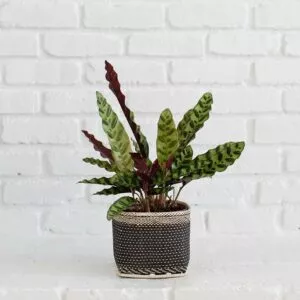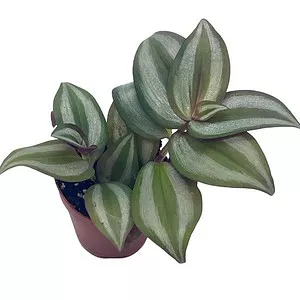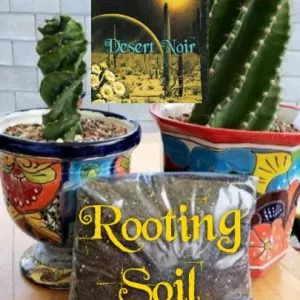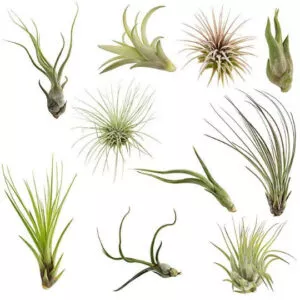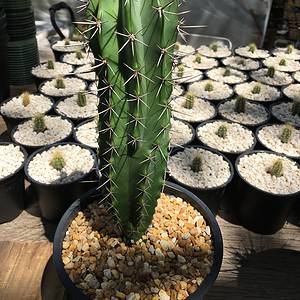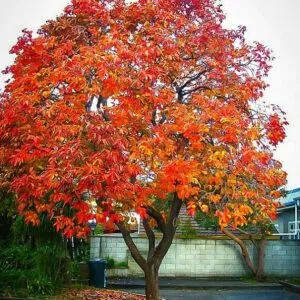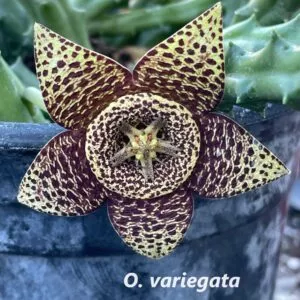No products in the cart.
Table of Contents
Elephant ear plants are grown for their dramatic foliage and are an eye-catching sight in the garden. The elephant ear, with its striking ear-shaped leaves, has an imposing size, reaching up to 6 feet. So, it can grow three feet long and two feet wide.
Still, it does depend on the species and where they are planted, but the common name elephant ear can include different varieties: Colocasia, Alocasia, and Xanthosoma. All of these have a plant with the name elephant ears.
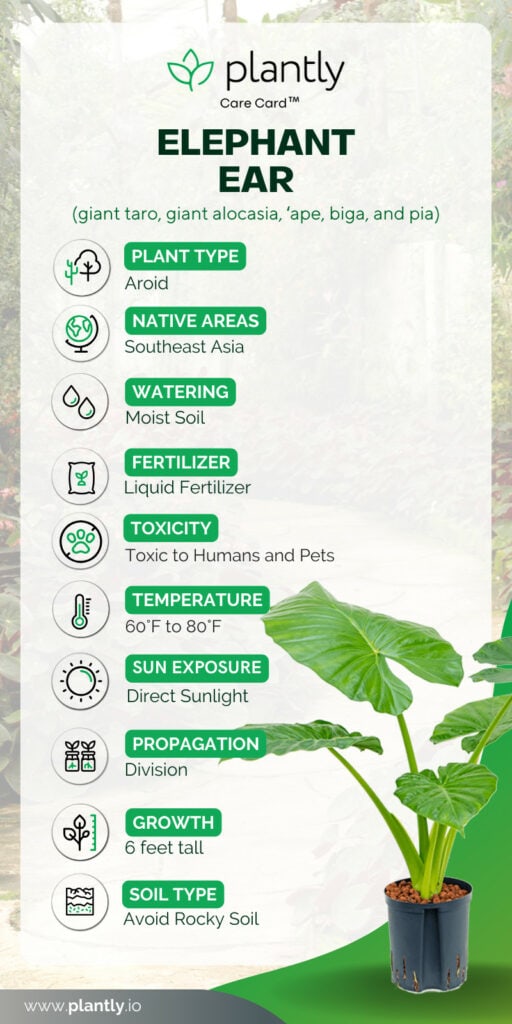
Elephant Ear Plant Care
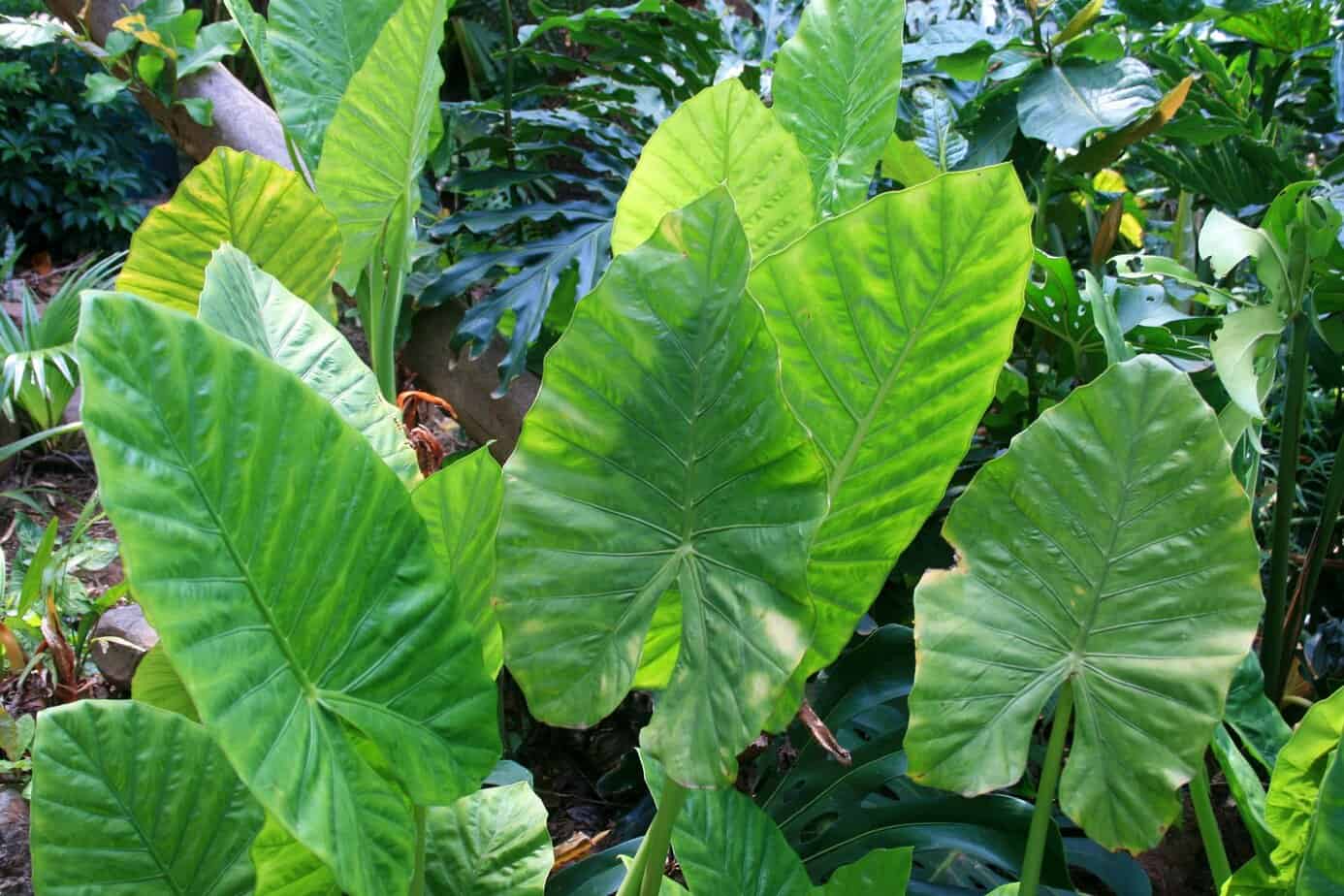
Elephant ears require average tending. When you plant elephant ear bulbs with dark green leaves, they will need full sun and partial shade in the afternoon. Remember that elephant plant care differs from one variety to another, so it’s a good idea to check the specific needs of the variety you’re planting.
For example, an Alocasia care differs from a Colocasia care. These plants grow well in water gardens; if you spot brown leaves on your elephant ears plant, it is best to remove them. These leaves will be replaced with new ones in the growing season.
When you live in warm climates like zones 8-10, elephant ears can be planted outdoors and treated as a perennial. But it is best to grow your elephant ears indoors in colder climates. Also, growing zone 8, where you expect frost, helps to prune your elephant ear plants to keep them alive.
You can cut back your elephant ears two to three days after the frost has passed. Prune the leaves near the base and leave them about two inches above the ground.
Elephant plant care differs from one variety to another, so it’s a good idea to check the specific needs of the variety you’re planting. For example, an Alocasia care differs from a Colocasia.
Elephant Ear Plant Sunlight
Although we associate tropical areas with a lot of sunlight, the fact is that most elephant ear plants do not enjoy exposure to direct sunlight and prefer partial shade. So, if you plant elephant ear bulbs with dark green leaves, they will need full sun and partial shade in the afternoon.
Elephant ears grow mostly under the canopies of trees. Still, if you have tropical plants with lighter foliage, they will appreciate bright sunlight with some shade. When it comes to keeping an elephant ear plant indoors, it helps to provide them with full sun.
We recommend keeping them behind sheer curtains to protect the gorgeous elephant ear leaves.
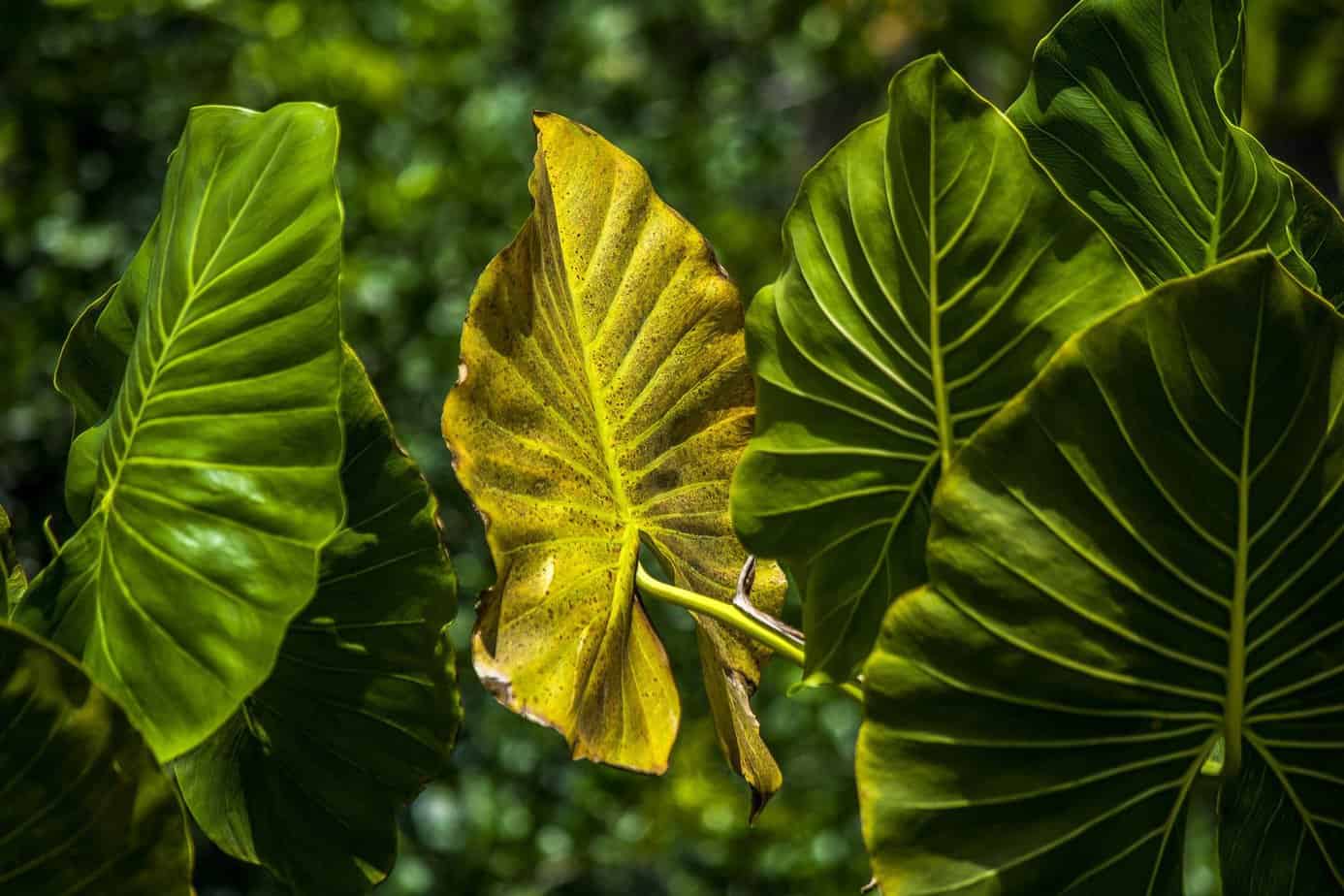
Elephant Ear Plant Watering and Humidity

Like most other tropical plants, elephant ears have higher humidity levels. If you want to avoid investing in a humidifier for your indoor plants or only cultivate elephant ears outdoors, ensure they get enough humidity from the air.
Wipe the foliage with a damp cloth when the dust is gathering to ensure the plant can benefit from the moisture. To ensure this, place the containers on top of water trays covered with pebbles -the water will evaporate and slowly release enough moisture for the plant to be happy.
The pebbles will keep the roots away from the water, which, in excess, can cause root rot. That said, it is evident that elephant ears do not like their soil to be soggy but prefer moist soil. To ensure this is the case, stick your finger in the soil -if the top layer is dry, it is time to water it; if it is wet, give it a day or two.
The average watering frequency is once a week. Avoid frequent watering during winter and prevent standing water at all costs.
-
$40.00Sold By: NEEPA HUT
In stock
6″ Rattlesnake Calathea indoor plant + Charcoal Planter Basket
Only 4 available and it’s in 2 people’s basketRated 4.99 out of 5 based on 221 customer ratings11Sold By: NEEPA HUT -
$5.99Sold By: BubbleBlooms
In stock
Wandering jew, Tradescantia zebrina Bosse
Only 27 available and it’s in 5 people’s basketRated 4.81 out of 5 based on 279 customer ratings01Sold By: BubbleBlooms -
$6.00Sold By: Smoot's Farm
In stock
Succulent Gasteraloe Flow 2″ Pot Live Plant
Rated 4.89 out of 5 based on 27 customer ratings00Sold By: Smoot's Farm -
Free Shipping$13.99 – $24.99Sold By: Desert Noir
In stock
Rooting Soil, Desert Noir, proprietary blend, cactus, propagation, succulents
Rated 4.99 out of 5 based on 234 customer ratings04Sold By: Desert Noir
Elephant Ear Temperature Tolerance
The ideal temperature for elephant ear plants is warm temperatures between 60-85°F (15-29°C).
Still, they can tolerate cooler temperatures as low as 50°F (10°C) but may become dormant during this time.
It’s essential to keep them away from cold drafts or abrupt temperature changes as they can shock them and cause damage to the elephant ear leaves.
The best is to retain a consistent warm temperature to maintain the health and growth of your plant.
Soil

Ensure you plant elephant ear bulbs in organic soil rich in phosphates after the frost has passed. So, it helps to invest in good quality potting soil to help retain moisture with some perlite or dry peat moss inside. Also, do not grow elephant ears in rocky soil, as it will damage the elephant ear tubers.
Fertilization
Due to the specific mineral content of the plant’s natural habitat, it is good to use a liquid fertilizer every two weeks. These are not heavy feeders.
Ensure that the fertilizer is rich in nitrogen and that you use it according to instructions since too much can damage and even kill the plant.
Do not fertilize during the dormant period, and allow your elephant ears to rest. Another notable thing is to plant elephant ear tubers in the ground when soil temperatures warm up.
Repotting
Once you have chosen the location and soil mix, you can learn how to plant elephant ear bulbs. To plant or repot your elephant ears, pick a firm and healthy corm or bulb, preferably in spring.
Plant the tubers outside (at least 18 inches apart) or in a large container (14-20 inches) and ensure they are about 8 inches deep in the soil. When placing the tubers, make sure that the roots are placed downwards.
Also, keep the root ball at the same soil line and ensure warm soil when planting.
Pruning Elephant Ear
Pruning your elephant ear plant is necessary only when you need to prepare it for the winter, yet if you want to maintain its lush green appearance all year round, you can do things.
You can wait for the old brown leaves to fall out on their own or use a clean and sharp knife to cut them to the stem carefully.
You can also use scissors or knives to cut the damaged parts of the leaves – i.e., brown edges or tips.
Overwintering

Since the elephant ears plant is tropical, it does not do well with cold weather, just like other tropical plants. If your elephant ear is planted in a container, you do not have to worry too much – you can bring the plant inside and protect it from the cold.
During the winter, the elephant ear plant will probably go dormant, so it will not produce any new foliage. In some cases, it will seem like the plant is dying – it will start dropping leaves, for example, but it is not dying.
In this case, do not water them during winter, and stop using the fertilizer. Once you see new foliage in the spring, you can resume the usual watering and fertilizing activities. If your closed space is too tiny for a gigantic elephant ear plant, or if you have it planted outside, there are things you must do.
You must cut the foliage to a few inches and dig up the tubers carefully to avoid damaging them. Let them dry for a few days, then place them in peat moss.
Ensure the room you place them in is cool and dry – a basement would be a good choice. Do this after the first frost, and plant them back in spring.
-
Free Shipping$156.04Sold By: BONSAI WORLD LLC
Only 1 left in stock
Ficus Kaneshiro Bonsai Tree (ficus microcarpa ‘kaneshiro’)
Only 1 available and it’s in 1 people’s basketSold By: BONSAI WORLD LLC -
$45.00Sold By: Beauties & Beasts
$50.00In stock
Ceramic Planters- Rae Dunn by Magenta Stem Print- Set of 2
Rated 4.83 out of 5 based on 24 customer ratings00Sold By: Beauties & Beasts -
Free Shipping$18.95Sold By: CTS Air Plants
In stock
Air Plants Tillandsia Collection of 10 Easy Houseplants
Only 100 available and it’s in 2 people’s basketSold By: CTS Air Plants -
How to Propagate Elephant Ears
Elephant ears can be propagated through several methods, including division and offsetHere’se’s how to propagate elephant ears:
Propagation by Division:
The best time to divide elephant ears is in the spring or early summer when the plant is actively growing.
Choose a mature elephant ear plant with several stems or bulbs clumped together. Carefully remove the plant from its pot or the ground, preserving the root system as much as possible.
Use a spade, garden fork, or hand to separate the bulbs or rhizomes. Each division should have at least one growing point and a portion of the root system.
Trim any damaged or dead roots and leaves from each division. You can also apply a rooting hormone to the cut ends if desired, although this is optional for elephant ears.
Fill pots or containers with well-draining potting mix. Plant each division at the same depth it was previously growing. Space them adequately, considering their mature size.
Water the divisions thoroughly after planting. Please place them in a location with bright, indirect light and keep the soil consistently moist. Provide the same care as you would for established elephant ear plants.
Propagation by Offsets:
Offsets are smaller bulbs or rhizomes that grow at the base of the parent plant. You can remove and plant these offsets to propagate elephant ears:
Look for small bulbs or rhizomes with their shoots growing near the base of the parent plant.
Dig around the offset to expose it, not damaging the roots. Use your hands or a spade to separate the offset from the parent plant.
Trim any damaged or dead roots and leaves from the offset. Plant it in a pot or directly in the garden at the same depth it was growing. Water it thoroughly.
Provide the same care as mature elephant ear plants, including proper watering and lighting conditions.
Propagation by offsets is a relatively simple and effective method, especially if you want to create new plants without disturbing the parent plant too much.
How to Grow Elephant Ears From Seed
Growing elephant ears from seeds can be a rewarding experience for any plant enthusiast. First, soak the seeds in warm water for 24 hours before planting. This allows the seed to soften and germinate more quickly.
Next, prepare a pot with seed starting soil and plant the seed 1 inch deep. Keep the soil moist but not waterlogged, and place the pot in a warm, bright location with indirect sunlight. Germination can take anywhere from 7 to 21 days.
Once the seedling has emerged, moisten the soil and provide plenty of light. As the plant grows, it may require repotting into a larger container. With proper care, your elephant ear plant will thrive and grow into a beautiful addition to your home or garden.
Elephant Ear Colocasia Varieties
Colocasia esculenta, the most common elephant ear, is widely cultivated in tropical regions as a food crop, commonly called “taro.” These plants require peeling and cooking before consumption due to calcium oxalate, which can irritate the mouth and throat. Besides its culinary use, this species also serves as an ornamental plant.
Some popular cultivars of elephant ears are:
Gigantea
This variety features massive, heart-shaped leaves reaching up to six feet long. The foliage is a deep green color with prominent veins that add texture. Gigantea is one of the largest and most impressive elephant ear cultivars.
Illustris
Illustris is known for its striking, variegated foliage. The large, arrow-shaped leaves are predominantly green with bold white or cream-colored veins and margins. This cultivar adds a beautiful contrast to any garden.
Black Magic
As the name suggests, Black Magic has deep purple-black foliage that appears almost black. The large, heart-shaped leaves have a velvety texture and stunning color, making them stand out in any planting.
Lime Zinger
This cultivar features bright lime green leaves with a glossy sheen. The foliage has a unique, wavy texture that adds interest. Lime Zinger is a vibrant addition to any garden or landscape.
Coffee Cups
Coffee Cups is a dwarf variety with small, cup-shaped leaves that resemble little coffee cups. The foliage is a deep green, and the compact size makes it perfect for containers or smaller spaces.
Mojito
Mojito features vibrant, lime-green foliage heavily mottled with dark green patches. The unique coloration and pattern make this cultivar a real eye-catcher in any garden.
Hawaiian Eye
This variety has large, heart-shaped leaves with a unique, eye-catching pattern. The foliage is predominantly green with a bold, central yellow-green eye that radiates outward from the center of the leaf.
Elena
Elena is a compact cultivar with attractive, dark purple-black foliage. The leaves have a velvety texture and a deep, rich color, making it a striking addition to any planting.
Metalhead
Metalhead is known for its unique, metallic-looking foliage. The leaves have a shimmering, silver-blue sheen that almost appears to be iridescent. This cultivar is a real standout in any garden.
Common Pests & Plant Diseases
Some common pests that can harm the plant are spider mites, scale, and mealybugs. Keep the plant clean and well-watered to prevent these pests, and inspect it regularly for any signs of infestation. Regarding diseases, bacterial blight, and root rot are the main concerns for elephant ear plants.
To prevent these issues, ensure the plant has adequate drainage and doesn’t sit in standing water.
Frequently Asked Questions
To get elephant ear plants to bloom, it is essential to provide them with proper care and attention. First, ensure they are planted in well-draining soil rich in organic matter.
They also need plenty of sunlight, but be careful not to expose them to direct sunlight for too long, as this can damage their leaves. It’s also essential to keep the soil consistently moist but not soggy.
You can fertilize them with a balanced fertilizer every two weeks during the growing season to encourage blooming. Your elephant ear plants should bloom in the summer months with proper care.
If your plant’s leaves turn yellow, it could indicate several issues. Overwatering can cause the roots to rot and the leaves to turn yellow.
Conversely, underwatering can also cause yellowing leaves. Lack of nutrients or improper soil pH can also be culprits. Check the soil moisture levels and adjust your watering schedule accordingly. Consider fertilizing with a balanced fertilizer if you suspect a nutrient deficiency.
If the soil pH is off, you may need to amend the soil or switch to a different type of fertilizer.
Yes, they can be grown indoors! They are a popular choice for houseplants due to their large, tropical-looking leaves.
To grow an elephant ear indoors, place it in a bright location, but avoid direct sunlight, which can scorch the leaves. Keep the soil moist (but not soggy), and fertilize every few weeks with a balanced fertilizer.
With the proper plant care, your indoor elephant ear should thrive!
For best results, place your elephant ear plant in a bright location in your home, but avoid direct sunlight, which can damage the leaves.
Several alternatives to elephant ear plants include snake plants, spider plants, pothos, and peace lilies. Each plant has unique characteristics and can thrive in different lighting conditions; it’s essential to research their specific care requirements before selecting one.
Elephant ear plant growth rate varies by variety and conditions. During the growing season, they increase, with new leaves every few weeks. Growth slows or stops outside of the season. Proper care ensures healthy growth.
Whether you want to buy, sell or simply reach out to other plant enthusiasts, Plantly is the right place to be!
-
$4.59Sold By: Cacti and Exotica
In stock
Rhipsalis Paradoxa 2″ Pot
Only 9 available and it’s in 1 people’s basketRated 4.98 out of 5 based on 59 customer ratings00Sold By: Cacti and Exotica -
$6.00Sold By: Smoot's Farm
In stock
Parodia Magnifica Cactus
Rated 4.89 out of 5 based on 27 customer ratings00Sold By: Smoot's Farm -
Free Shipping$34.95Sold By: CKK PRODUCTS LLC
$45.00In stock
FUYU Persimmon Tree Seedling (Small-medium size)
Rated 5.00 out of 5 based on 1 customer rating00Sold By: CKK PRODUCTS LLC -
$15.00Sold By: Beauties & Beasts
Succulent Carrion Flower Huernia, Stapelia and Orbea
Rated 4.83 out of 5 based on 24 customer ratings00Sold By: Beauties & Beasts
